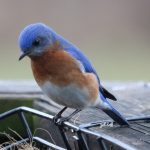Bird Man Mel’s Favorite Plants
PERENNIALS
Coneflowers (purple & yellow – Native variety) – Finches, Hummingbirds & Butterflies
American Bittersweet (Native variety) – Bluebirds
Cardinal Flower (wet areas – Native variety) – Hummingbirds
Columbine (early bloomer – Native variety ) – Hummingbirds
New England Aster (Native variety) – Monarch Butterflies & Songbirds
Butterfly Milkweed (Native variety – Monarch Butterflies, other Butterflies & Pollinators
Blue False Indigo (Native variety) – Bumble Bees, Birds, Small Mammals
Ninebark – Pollinators, Birds & Butterflies
Buttonbush – Butterflies, Songbirds & Beneficial Insects
Eastern Redbuds – Birds, Bees & Butterflies
Joe-Pye Weed – Butterflies
Beebalm – Hummingbirds
Drop Me Scarlet Honeysuckle – Hummingbirds
Trumpet Vine – Hummingbirds
ANNUALS
Cigar Plant – Hummingbirds
Fuchsia Basket – Hummingbirds
Penta – Hummingbirds & Butterflies
Lantana – Hummingbirds
Cardinal Climber – Hummingbirds
Impatiens (shade) – Hummingbirds
Geranium (Red) – Draws in Hummers – Not a great nectar plant
Coreopsis – Songbirds, some Butterflies
Salvia (also perennials) – Hummingbirds & Songbirds
Petunia (only open-throated red ones) – Hummingbirds
Zinnias (particularly red ones) – Butterflies, Hummingbirds & Songbirds
Sunflowers – Songbirds


